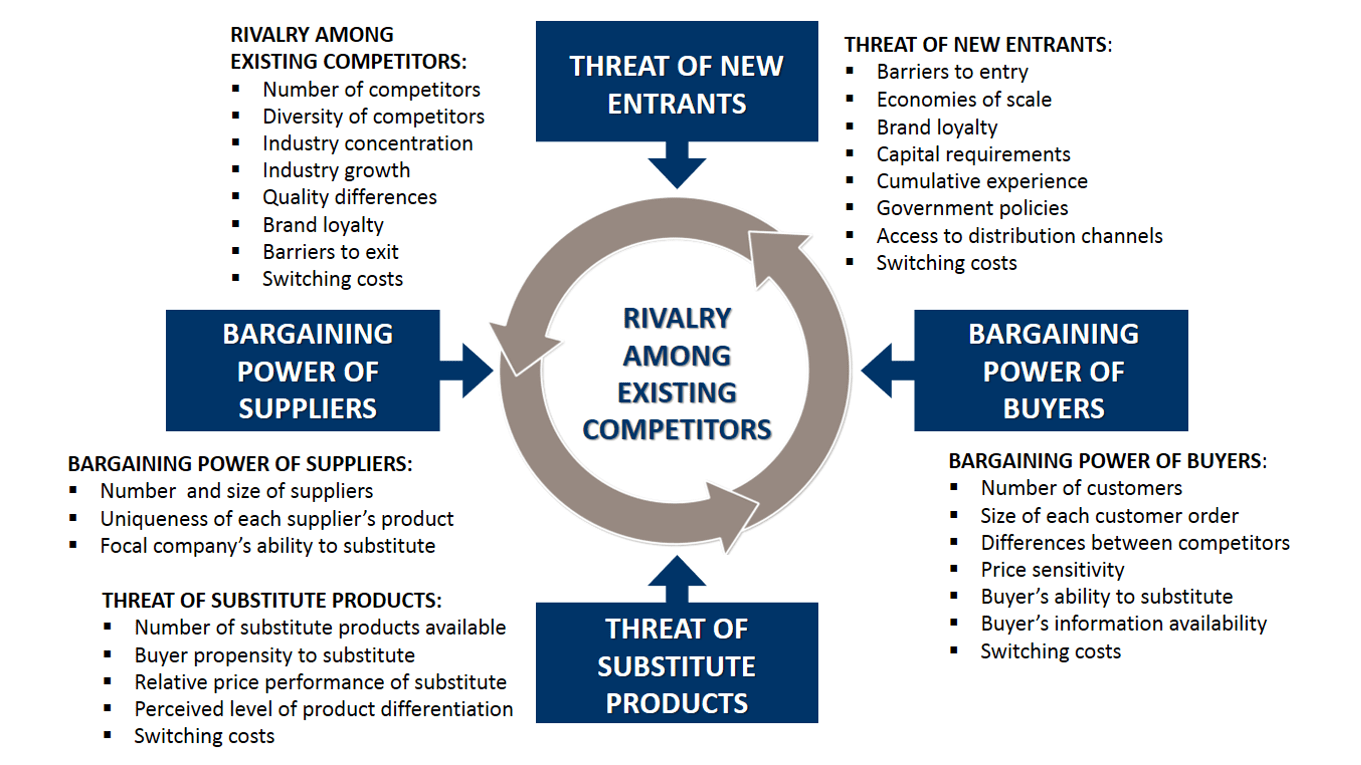An organisation must understand the nature of the relationship within its industry to allow the enterprise to develop strategies to gain advantage of the current relationships.
A useful framework that can be utilised when undertaking this analysis, is Porter’s ‘five forces’ model of establishing industry attractiveness for a business. This analysis should be conducted at the level of the individual strategic business unit (SBU) rather than at the level of the organisation as a whole, otherwise the range of relationships facing a company with several divisions, causes the analysis to lose focus.
Porter identified five factors that affect the level of competition and therefore profitability within an industry:
Suppliers
The power of suppliers is liable to be strong where:
- Control over supplies is concentrated into the hands of a few players.
- Costs of switching to a new source of supply are high.
- The supplier has a strong brand.
- The supplier is in an industry with many smaller disparate customers.
Buyers
The power of buyers is liable to be strong where:
- A few buyers control a sizable percentage of a volume market.
- There are many small suppliers.
- The cost of switching to a new supplier are low.
- The supplier’s product is undifferentiated, effectively lowering barriers to alternative sources of supply.
Potential Entrants
The threat of potential entrants will be determined by several barriers to entry that may exist in any given industry.
Substitutes
Substitution can arise in several ways:
- A new product or service may eradicate the need for an earlier process. Insurance services delivered directly by producers over the phone or Internet are substitutes for the services of the independent insurance broker.
- A new product replaces an existing product or service. Cassette tapes replaced vinyl records, only for the latter to be replaced by compact discs.
- All products and services suffer from generic substitution. Consumers may choose to substitute buying a car to purchase an expensive holiday instead.
Competitive Rivalry
The intensity of competition in the industry will be determined by a range of factors. They are:
The stage of the industry life cycle. Natural growth reaches a plateau once an industry reaches maturity. The only way an organisation can continue to grow is to take more market share off its rivals.
The relative size of competitors. In an industry where rivals are of comparable size, competition is likely to be intense as each strives for a dominant position. Industries that already are clear dominant players tend to be less competitive.
In industries that suffer from high fixed costs, companies will try to gain as much volume throughput as possible. This may create competition based on price discounting.
There may be barriers that prevent companies from withdrawing from an industry. This may be plant and machinery that are specialist in nature and therefore cannot be transferred to other uses. The workforce may have non-transferable specialist skills. If the industry is in maturity, moving towards decline, and rivals cannot easily leave the industry, then competition inevitably will increase.
